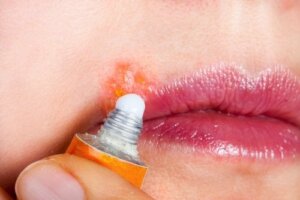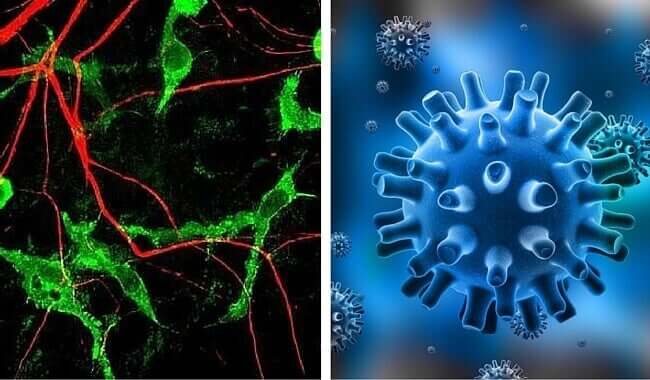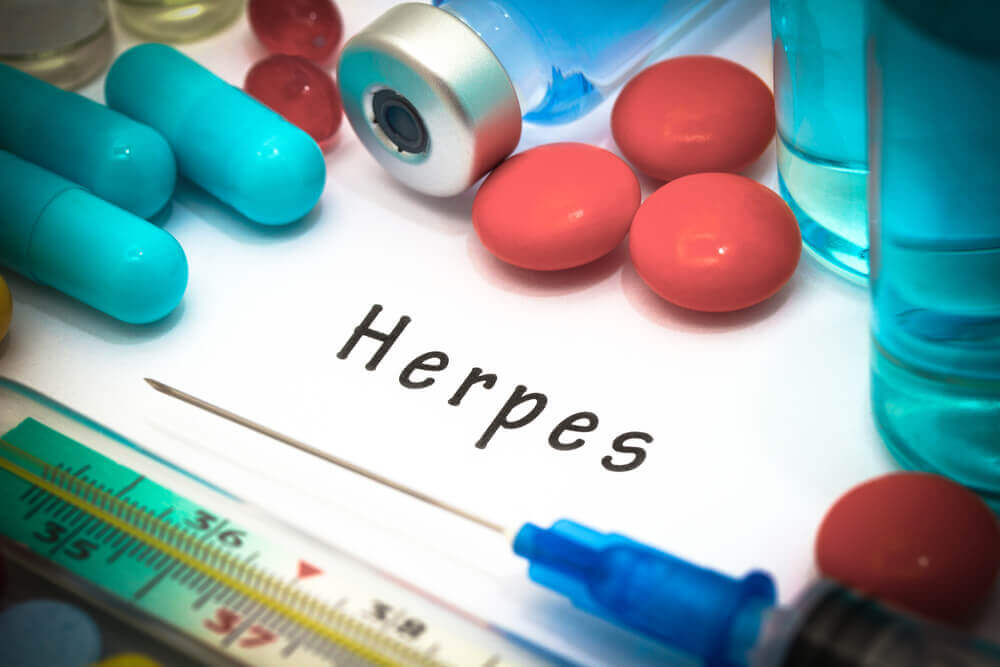Oral Herpes: Symptoms and Treatment


Written and verified by the doctor Leonardo Biolatto
Oral herpes is often called “fever blisters” or “cold sores.” This condition is closely related to aesthetics because, at the peak of a flare-up, it produces blisters around the mouth.
A virus causes the infection, which can spread much more easily than other diseases.
According to the World Health Organization, if tested for oral herpes, about 67% of the adult population around the world would have a positive result. In other words, a person can test positive even though they have never had symptoms.
How it spreads
The herpes simplex virus HSV-1 causes oral herpes. This pathogen belongs to the virus family known as Herpesviridae. Also part of this family is HSV-2, otherwise known as genital herpes.
Generally speaking, these viruses affect different parts of the body. For example:
- HSV-1 stays around the mouth, mainly.
- HSV-2 manifests in the genital region, causing genital herpes.
Both of these viruses are transmitted through contact, even when they are not visible or active lesions. In layman’s terms, one person can infect another person even if they don’t have blisters at the time of contact.
Of course, viral transmission is much more likely if the person has blisters present. However, the greatest probability of transmission is if one of the blisters bursts and the liquid inside spreads. This is because the liquid in the blister is one of the biggest carriers of the herpes simplex viruses.
To be clear, herpes is highly contagious. An infected person can spread HSV-1 to another person through a kiss, but also by sharing kitchen utensils. On the other hand, HSV-2 is mainly spread through sexual contact.
Strictly speaking, however, this distinction isn’t always the case. For instance, someone could catch genital herpes from oral sex but have symptoms around their mouth as if it were oral herpes.

Discover more: Vaginal Herpes: What Is It and How to Prevent It
Oral herpes symptoms
HSV-1 goes through several phases. Depending on the stage of the virus’s evolution, the symptoms will be different.
Below we will describe the common natural evolution of oral herpes:
- Burning sensation: up until a day before blisters appear, an infected person might feel itching, burning, or tingling around the lips.
- Visible blisters: the second phase is visible blisters. Oral herpes blisters contain a clear liquid and are located on or around the lips. The person might come down with a fever at this stage.
- Blisters break: after about 4-7 days since the blisters appear, they break open and release liquid. Where the blister was, a sore will appear, which will later turn into a scab.
- Scarring: around fifteen days to a month after the first symptoms, the scabs go away and should not leave a scar. It’s important to note that this evolution typically lasts the longest during the first outbreak, and heals more quickly in subsequent outbreaks.
Read more: 5 Ways to Get Relief from Cold Sores Fast
Treatment options
Left untreated, oral herpes will move through its natural evolution cycle as we described above. After a few days, weeks, or at most a month, signs of the virus should disappear without scarring.
Then, the virus will remain dormant in the peripheral nervous system and, in the future, may or may not reappear with similar symptoms lasting less time.

Despite the effectiveness of antiviral drugs, HSV-1 will still be present in the peripheral nervous system and, therefore, may be reactivated in the future.
Antivirals come in tablets to take by mouth or as creams to apply topically. The oral route is more effective than the local one. Additionally, effectiveness depends on how early a person started treatment.
Ideally, a person should take their antiviral the moment they feel the familiar itching or burning sensation, or, once a blister appears at the latest.
When symptoms become painful, low-dose painkillers can help. Both Ibuprofen and Paracetamol are valid options to alleviate pain.
All cited sources were thoroughly reviewed by our team to ensure their quality, reliability, currency, and validity. The bibliography of this article was considered reliable and of academic or scientific accuracy.
- Echeverría, A., Vignoletti, F., Fabrizi, S., Matesanz, P. (2007).Papel etiológico de los virus en la enfermedad periodontal.Avances en periodoncia e implantología oral, 19(2), 101-113.
- Alvarez, Esthefanya Diaz, et al. “Conocimiento y tratamiento del herpes labial utilizado por adolescentes en Medellin.” Revista Nacional de Odontologia 13.26 (2017).
- Bascones-Martínez, A., Pousa-Castro, X. (2011). Herpesvirus.Avances en Odontoestomatología, 27(1), 11-24.
- Romero, H. R., Rojas, P. N., González, L. P., Klein, K. P.,de la Parte, M. A., Barrios, H. R. (2012). Actualización enInfecciones por el Virus Herpes Simplex. Informe Medico,14(8).nforme Medico,14(8).
This text is provided for informational purposes only and does not replace consultation with a professional. If in doubt, consult your specialist.








